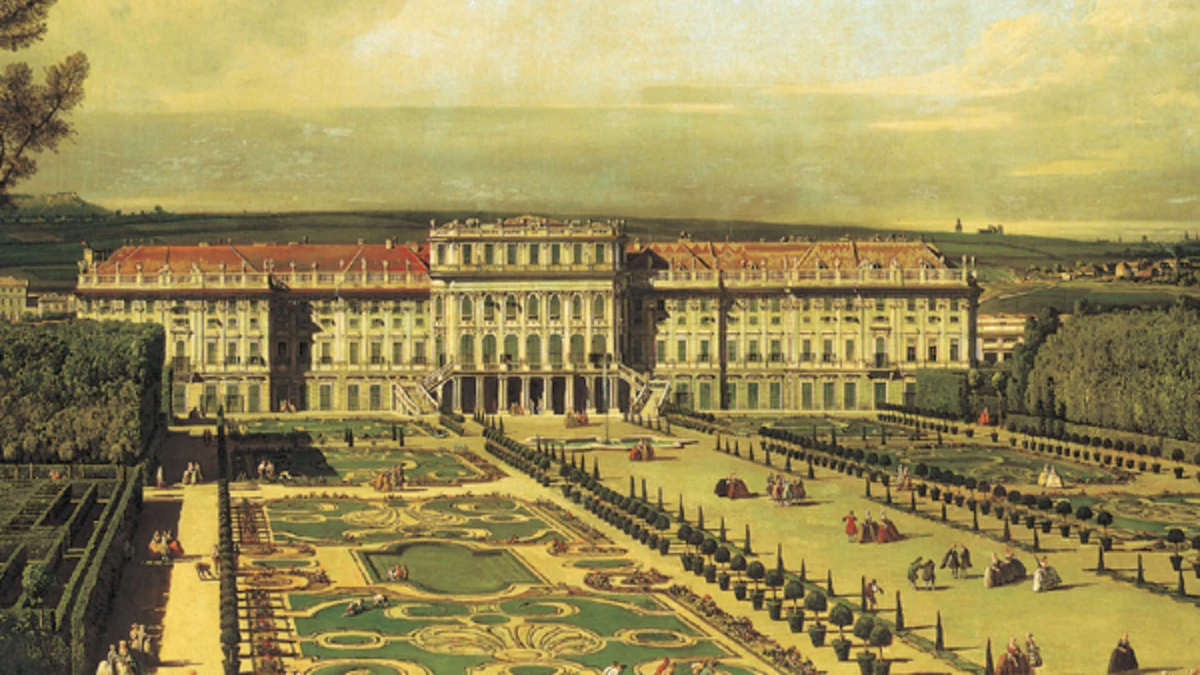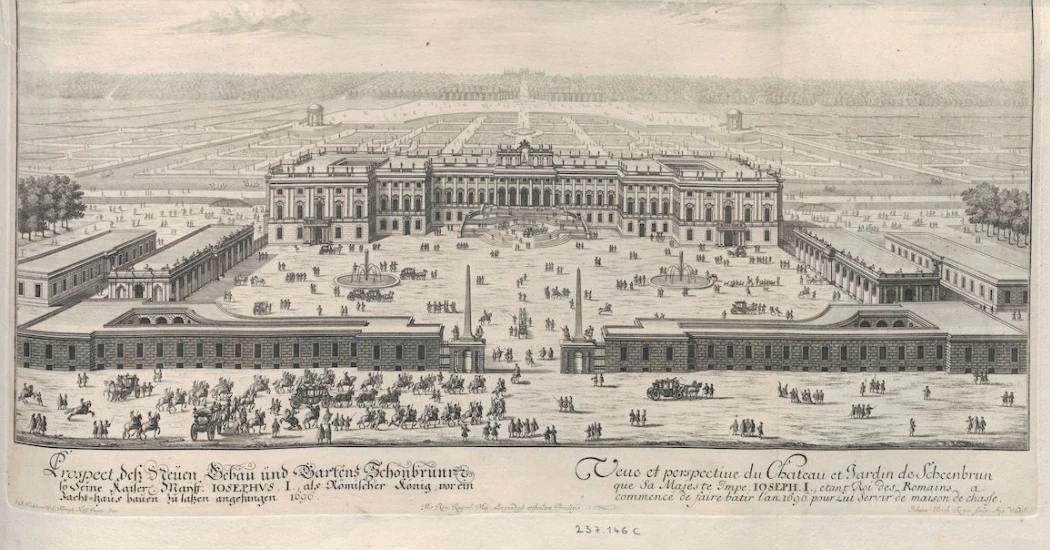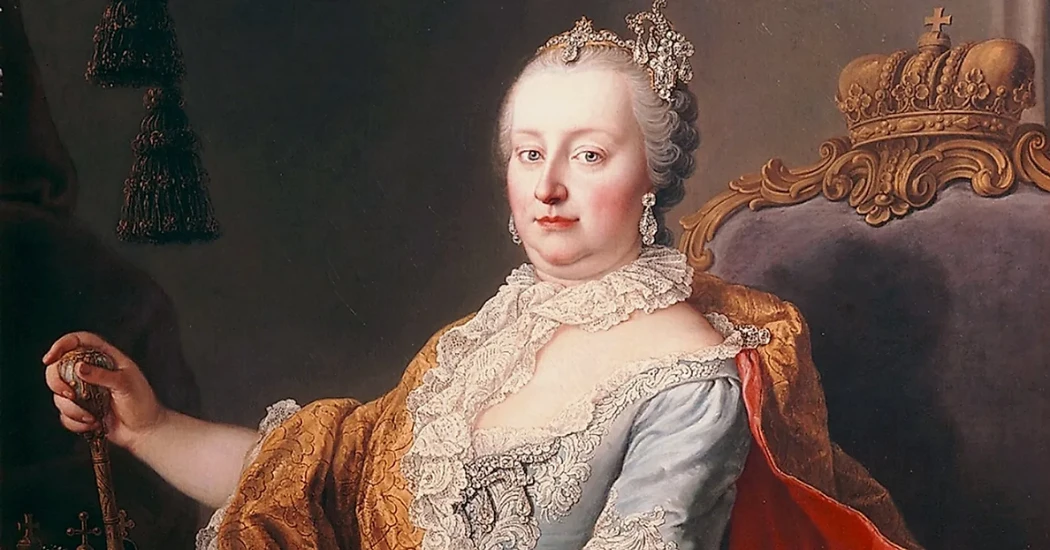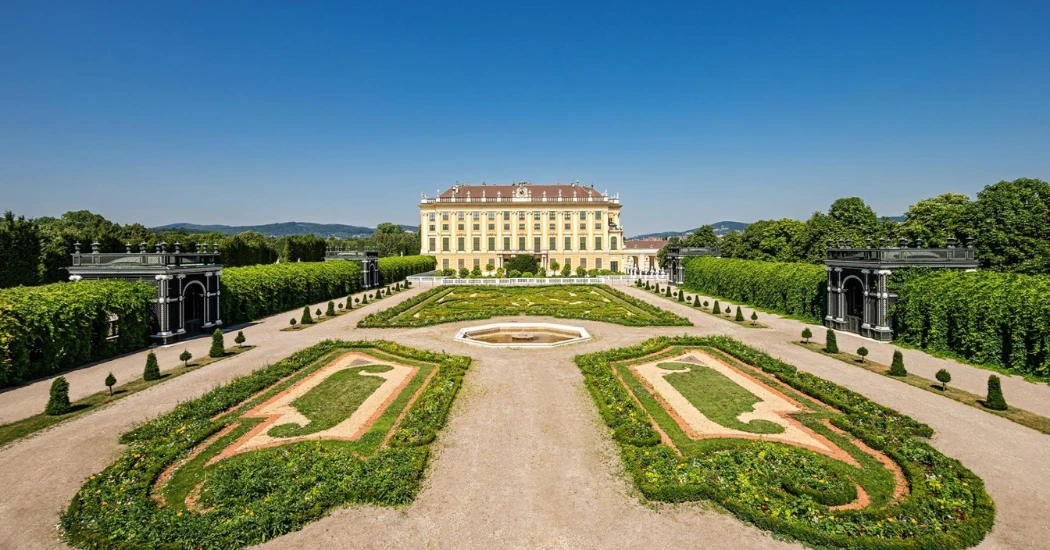Schönbrunn Palace History Uncovered
Everything You Need to Know About Schönbrunn Palace History

Most tourists come for the Schönbrunn Palace tour, but still don’t know the stories that lie behind those grand rooms and golden halls.
Few people know that it was where the Habsburgs raised their children, entertained monarchs, conducted politics, and lived their private lives.
From dramatic wars to fairy-tale weddings and musical evenings with Mozart, this place has seen it all.
In this article, you will learn some of the secrets of the Schönbrunn Palace’s history that will make your visit to this palace even more meaningful and memorable.
Table of Contents
How it all started: from hunting grounds to royal playground (1569)
Before emperors and empresses strolled through its gardens, Schönbrunn was just a hunting ground called Katterburg.
Legend says Emperor Matthias found a clear spring here around 1612 and exclaimed, “Schöner Brunnen!” (meaning “beautiful spring”), and the name stuck.
From that moment, this peaceful spot near Vienna slowly transformed into a symbol of royal power.
Key moments in the early days:
- 1569: Emperor Maximilian II buys the land
- 1612: Discovery of the spring
- 1642: The name “Schönbrunn” appears in official records
- 1683: The estate is destroyed during the Second Siege of Vienna
👉 If you’re curious about the palace’s art & architecture, this is where its foundations truly began.
Rebuilding after ruin: from rubble to royal ambition (1683 to 1699)

After the Ottoman siege in 1683 left Katterburg in ruins, Emperor Leopold I decided to rebuild it. He saw it as a chance to show off Austria’s strength and power.
He commissioned architect Johann Bernhard Fischer von Erlach to design something magnificent.
The goal?
To create something as grand as France’s Versailles.
Even though that exact dream was never fully completed, what came out of it was something special: the start of Schönbrunn Palace, with a style and personality all its own.
👉 Discover how these early designs influenced the later palace rooms you see today.
Maria Theresa’s makeover: a woman’s touch that changed everything (1740 to 1780)

1740s – This is when Maria Theresa, Austria’s only female ruler, took over.
When she got Schönbrunn, it was still just a big fancy building. She turned it into a real royal home, full of life and power.
Here’s what she did:
- Made Schönbrunn the main summer palace for the royal family
- Hired an architect named Nicolaus Pacassi to redesign and expand it
- Added hundreds of rooms, with beautiful halls and fancy meeting spaces
- Painted the walls a bright yellow that became so famous, it’s now called “Schönbrunn Yellow”
Maria Theresa didn’t just rule from here; she raised 16 children in the palace, including Marie Antoinette, who later became the Queen of France.
Then vs. Now: A palace that still echoes the past
Here’s how the past and present meet within its walls:
| Then | Now |
| Mozart, age 6, performed in the Mirror Room for Empress Maria Theresa. | You can stand in the same Mirror Room, some tours even host live concerts nearby. |
| Marie Antoinette learned etiquette inside the imperial apartments. | Today, you can walk through those gilded state rooms with a guided or audio tour. |
| Franz Joseph ruled the empire from his working study at Schönbrunn. | That study room is now one of the most visited stops in the Imperial Tour. |
| Royals visited the imperial menagerie, now known as Tiergarten. | The Schönbrunn Zoo is now a UNESCO World Heritage site and the oldest zoo in the world. |
| Napoleon stayed in the Blue Chinese Salon, using it as a war strategy room. | You can visit the exact same salon, often included in the Grand Tour ticket. |
Why dont you plan a visit to the Schonbrunn Palace to see how it has changed over time? Take a guided tour and your expert guide will treat you will amazing stories and facts that will always be memorable for you!
What did the Habsburgs do all day? (18th–19th centuries)
Schönbrunn served as both a royal residence and a center of daily life, where important decisions were made, and birthdays, concerts, and family time were just as cherished.
Typical activities in the palace included:
- Early morning prayers and strict etiquette routines
- Grand dinners, often with dozens of guests
- Secret political meetings and royal diplomacy
- Music sessions (Mozart played for Maria Theresa at age 6!)
- Family time in the gardens or the private zoo (Tiergarten)
This combination of power and personal life made Schönbrunn a place where major European decisions were made, often over dinner.
👉 Today, the palace’s concert tickets let you enjoy classical evenings in the very same setting.
Fun encounters: Napoleon slept here twice! (1805 & 1809)
Did you know that Napoleon Bonaparte used Schönbrunn as his headquarters? During his occupation of Vienna (1805 and 1809), he lived at the palace.
One of Schönbrunn’s most emotional scenes? When Napoleon’s young son, Napoleon II, known as the Duke of Reichstadt, spent his final days here. He died at the palace at just 21 years old.
These walls have witnessed both power and heartbreak.
Want more trivia? Explore Schönbrunn Palace facts for fascinating insights you won’t hear on most tours.
The Schonbrunn Gardens: where royals (and you) can wander freely (since 1779)

The gardens at Schönbrunn are just as special as the palace itself. They were designed in the 1700s to resemble the elaborate French gardens, but with an Austrian twist.
Over the years, they got bigger and even more beautiful.
Here are a few things you shouldn’t miss:
- The Gloriette – A grand arch on a hill that gives you amazing views of Vienna
- Neptune Fountain – A giant fountain that shows the royal family’s power over nature
- The Maze and Labyrinth – Fun paths made for royal games (you can still try them today!)
- Orangery & Palm House – Big greenhouses where rare and exotic plants were grown.
“The gardens also host seasonal events like Christmas at Schönbrunn Palace, making them magical in winter.”
👉 Plan enough time for the gardens and outdoor areas, as they’re just as iconic as the palace itself.
From private palace to public favorite (1918 to present)
After the monarchy ended in 1918, Schönbrunn became state property. Thankfully, instead of being shut away, it was opened to the public. See opening hours.
Over the decades, it hosted events, concerts, and dignitaries from around the world.
In 1996, UNESCO designated Schönbrunn a World Heritage Site, acknowledging its historical and cultural significance.
👉 Before you go, check the opening hours and best time to visit, so you don’t miss key highlights.
Famous modern moments:
- 1961: US President Kennedy met Soviet leader Khrushchev here
- 1993: Three Tenors concert on the palace grounds
- Now: More than 4 million tourists visit annually
👉 Looking for a special visit? The palace even offers exclusive after-hours tickets for a quieter, more intimate experience.
